You know how it goes. One incident, one rushed report, and suddenly a minor oversight becomes a major compliance issue. Not because your team isn’t trained or committed, but because even the best people can only do so much with systems that aren’t built for the real world of environmental health and safety.
That’s what made me dig deeper into today’s best environmental health and safety (EHS) software: not just what these platforms promise, but how they actually perform for teams managing safety, compliance, and risk across multiple sites.
I reviewed G2 feedback, compared leading EHS tools, and looked at what makes the top performers stand out. It turns out that the difference often comes down to how well a system fits into daily workflows, whether it automates the right tasks, flags issues before they escalate, and gives leaders visibility when it matters most.
This guide outlines the features and feedback that matter most if you’re looking to reduce friction, reduce manual errors, and gain confidence in your compliance readiness.
6 best environmental health and safety software: My picks for 2025
- VelocityEHS Accelerate: Best for all-in-one EHS and ESG management
Known for its robust platform that combines EHS, ESG, and sustainability tools with strong compliance support.
- SafetyCulture: Best for mobile inspections and frontline safety
Popular for its easy-to-use app (iAuditor) that empowers frontline teams to conduct inspections, audits, and checklists on the go (free plan available, advanced plans starting at $24/user/mo).
- ETQ Reliance QMS: Best for quality-driven EHS compliance
Known for its strong quality management integration with EHS, helping organizations simplify audits, CAPAs, and document control.
- KPA Flex: Best for training, incident, and compliance tracking
Recognized for its user-friendly platform that simplifies safety training, compliance workflows, and incident management, especially for mid-sized businesses.
- Ideagen EHS: Best for high-risk industries with complex compliance needs
Trusted in sectors like aerospace and manufacturing for managing EHS risks, audits, and regulatory reporting at scale.
- Intelex EHSQ: Best for mid-to-large enterprises needing unified quality and safety management
Offers a comprehensive suite to manage EHS, quality, and operational risk on a single platform.
* These environmental health and safety software solutions are top-rated in their category, according to G2 Grid Reports. Pricing for most of these tools is available on request.
My top 6 environmental health and safety software recommendations for 2025
The best environmental health and safety software enables organizations to streamline compliance, mitigate workplace risks, and centralize safety data across teams, sites, and regulatory bodies.
The surge in demand for these solutions is evident in the global EHS software market, which was valued at $760.6 million in 2024 and is projected to reach $2.19 billion by 2030, growing at a CAGR of 19.9%.
In exploring these platforms, it’s clear how effectively they simplify reporting, improve accountability, and give safety teams end-to-end visibility into incidents, audits, and corrective actions.
The best environmental health and safety software solutions are equipped with real-time dashboards, automated workflows, mobile inspections, and built-in compliance tools. They are particularly powerful in high-risk and highly regulated environments, where safety and precision are non-negotiable.
How did I find and evaluate the best environmental health and safety software?
To identify the best environmental health and safety software solutions for 2025, I analyzed user reviews and ratings on G2, focusing on feedback from EHS professionals, safety managers, and compliance officers. I also referred to G2 Grid® Reports to evaluate each product’s market presence, feature set, and satisfaction scores.
To deepen my understanding, I used AI tools to scan review patterns and extract insights on usability, support quality, deployment experience, scalability, and return on investment. The screenshots featured in this article are sourced from each vendor’s website or G2 profile.
By combining expert insights with real-world user feedback, I’ve curated a list of the best environmental health and safety software to help you choose a reliable, scalable solution tailored to your organization’s safety and compliance needs.
What makes environmental health and safety software worth it: My opinion
When evaluating the best environmental health and safety software, I focused on several key capabilities to determine each platform’s overall value and effectiveness for safety teams and compliance-driven organizations:
- Incident reporting and compliance tracking: Top EHS platforms should make it easy to log, track, and investigate incidents while staying compliant with regulations like GDPR, OSHA, ISO 45001, and EPA standards. I assessed how well each tool supports structured reporting, root cause analysis, regulatory forms, and corrective actions.
- Automation and workflow management: Reducing manual effort is critical for busy safety teams. I looked for tools that support automated workflows, for example, triggering follow-up tasks after an incident, sending alerts for overdue inspections, or escalating audit findings. Platforms with visual workflow builders and low-code customization stood out.
- Dashboards, audit trails, and real-time monitoring: Visibility and accountability are key. I evaluated how well each solution provides real-time dashboards, audit logs, and historical tracking of safety events, training completion, and compliance metrics. Tools that support configurable KPIs, exportable reports, and automated alerts ranked higher.
- Role-based access and permissions: Data protection is essential in safety systems, especially when handling sensitive incident reports or compliance audits. I reviewed how platforms implement role-based access control (RBAC), permissions by module or site, SSO integration, and user authentication to prevent unauthorized access.
- Scalability and deployment options: Scalability matters whether your organization operates from a single site or across global facilities. I considered whether platforms offer cloud-based, on-premise, or hybrid deployment options, along with mobile access for field teams and multilingual support for global operations.
- Integration and API access: EHS software needs to connect with your broader tech stack — HR systems, learning management systems, maintenance software, and more. I evaluated each tool’s API capabilities, integration options, and ability to work within enterprise ecosystems to support seamless data flow and reduce double entry.
By focusing on these areas, I was able to identify the most capable EHS platforms that support both day-to-day safety operations and long-term compliance strategies.
- Monitor company waste and incidents related to safety
- Include regulatory incident reporting and corrective actions
- Perform proactive environmental and safety risk assessments
- Manage an audit trail of compliance and safety data
- Provide tools for safety assessment and inspections
- Analyze environmental, health, and safety activities
- Provide security features to protect sensitive environmental data
This data was pulled from G2 in 2025. Some reviews have been edited for clarity.
1. VelocityEHS Accelerate: Best for all-in-one EHS and ESG management
VelocityEHS Accelerate EHS & ESG is a well-rounded platform that simplifies OSHA compliance, especially for chemical safety. It is a strong fit for industries like manufacturing, hospitals, and health care.
According to G2 data, the platform is especially popular among mid-market (46%) and enterprise (42%) organizations, reflecting its scalability and effectiveness in handling complex safety and compliance needs across larger operational environments.
Many G2 reviews highlight how the software integrates key tasks, like managing chemical inventories, tracking SDS records, and organizing compliance documents, into one place. This helps reduce manual work and gives users more confidence in meeting regulations.
A major plus for users is the platform’s easy-to-use interface. While other EHS tools are often called clunky or overly complex, this one stands out for being clean and intuitive.
According to user feedback, onboarding is smoother than expected. Many also appreciate the helpful support resources — FAQs, video tutorials, and live monthly training sessions, that keep users informed about new features and updates.
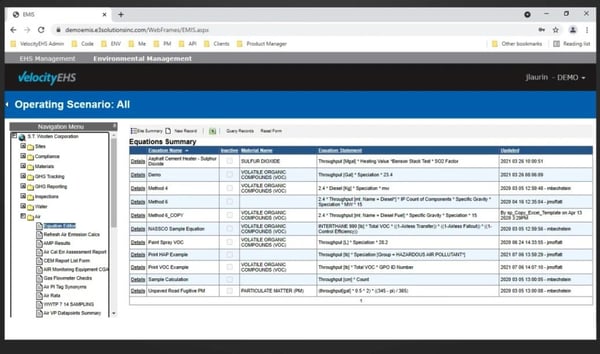
That said, several reviewers mention a learning curve during the initial setup. The wide array of buttons and database features can feel overwhelming at first. However, many of those same users report that, with regular use, navigation becomes second nature and the platform’s depth turns into an asset rather than a hurdle.
Another frequently mentioned feature is the chemical labeling tool. Users find it helpful for managing containers, though a recurring frustration is its incompatibility with common printers like Dymo, especially for teams that rely on those devices for other labeling needs.
VelocityEHS Accelerate is a robust and continually evolving solution that delivers real value for organizations aiming to strengthen their EHS and ESG programs. While there’s room for refinement in some areas, user feedback shows that its benefits — intuitive design, strong compliance tools, and reliable support — far outweigh the drawbacks.
What I like about VelocityEHS Accelerate EHS & ESG:
- I found that users really appreciate how the platform simplifies OSHA compliance, especially by centralizing chemical inventory and SDS tracking in one place.
- The interface seems to be a big win. G2 reviewers describe it as clean and intuitive, which makes onboarding smoother than with other EHS tools.
What G2 users like about VelocityEHS Accelerate EHS & ESG:
"Velocity is an easy-to-use system that helps keep our organization in compliance with regulations and standards. It’s very user-friendly and simple to implement. I appreciate how easily SDS documents can be added through Velocity’s online database. They also offer support training for different user types and are quick to respond to any questions or concerns."
- VelocityEHS Accelerate EHS & ESG Review, Alyssa F.
What I dislike about VelocityEHS Accelerate EHS & ESG:
- From what I read, there’s a noticeable learning curve at the start; the number of options and buttons can feel overwhelming until users get more familiar with the system.
- The label-making tool seems useful, but it doesn’t support common printers like Dymo, which can be challenging for teams that rely on those devices.
What G2 users dislike about VelocityEHS Accelerate EHS & ESG:
"Unfortunately, I don't feel I've ever received thorough system administrator training. We've mostly been left to figure things out on our own, joining generic webinars as they come up, without a formal project plan, rollout process, or in-depth training on how the system interfaces work."
- VelocityEHS Accelerate | EHS & ESG Review, Verified User in Consumer Goods
2. SafetyCulture: Best for mobile inspections and frontline safety
SafetyCulture as an EHS is easy to integrate and implement. Users consistently describe the setup as quick and straightforward, often requiring little or no help from IT.
Many mention they were able to get the platform up and running with their existing workflows in a short time, allowing teams to adopt it smoothly and without major disruptions. Its strong usability appeal is reflected in G2 data, with 44% mid-market and 38% small-business adoption, highlighting its accessibility and flexibility for organizations of varying sizes.
Another aspect users really appreciate is the customer support. Across many reviews, whether users are on the free plan or paying customers, the support team is described as responsive and helpful, even with small or specific questions. This level of attention makes users feel genuinely supported, not just like another service ticket.
The form-building feature also gets a lot of praise. According to the feedback I’ve seen, users find it easy to create and edit custom forms, choose response types, and build smart checklists. The ability to add conditional sub-questions based on user answers is often called a game-changer, especially for audits and inspections that need to adapt in real time.
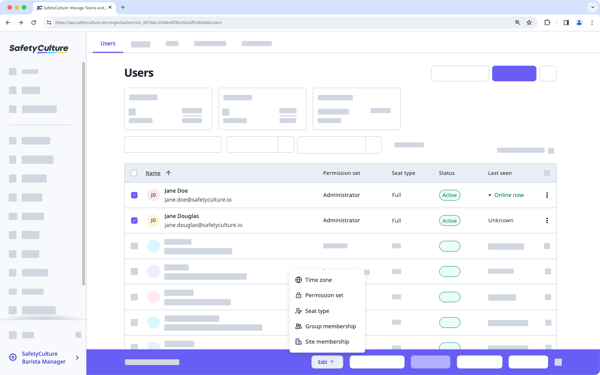
That said, some users report occasional issues with duplicate reports when multiple team members work on the same form simultaneously. While this can lead to extra cleanup initially, many reviewers mention that the problem tends to subside as teams become more comfortable with the platform’s collaboration and version control features.
A few users also point to a mild learning curve when it comes to mastering the platform’s more advanced tools. These features are not inherently difficult, but may require some time and practice to use confidently and effectively.
SafetyCulture is a powerful yet approachable EHS platform that delivers real value through quick setup, responsive support, and highly customizable tools. While teams may experience some initial bumps — particularly around collaboration and advanced features — the platform’s strengths in usability, flexibility, and support infrastructure make it a solid choice for organizations looking to streamline their safety processes.
What I like about SafetyCulture:
- I saw that many users find the platform incredibly easy to set up and integrate, it fits into existing workflows quickly, often without needing IT support.
- The responsive customer support really stood out to me; even free users seem to get timely and helpful responses, which makes people feel genuinely supported.
What G2 users like about SafetyCulture:
"SafetyCulture has improved our management processes and brought more structure to our equipment and tool inspections. We can easily delegate specific tasks to other users within the platform, clearly define activities, set deadlines, and track progress. The modular structure of inspections makes it easy to divide audits into sections, record the status of different equipment, add detailed notes, and upload photos directly from a phone."
- SafetyCulture Review, Nick P.
What I dislike about SafetyCulture:
- Some users mentioned issues with duplicate reports when multiple people edit at once, which can create unnecessary cleanup work.
- Some of the more advanced features appear to have a slight learning curve, although users say it improves with regular use and updates.
What G2 users dislike about SafetyCulture:
"It’s very easy to accidentally create duplicate reports, especially when multiple people are editing at the same time. This can create extra work when you're first learning to navigate the software. However, it’s easily avoided once you become familiar with the system. The only way to dispose of duplicates is to archive the unwanted report, and this must be done by the original creator, but again, it's not a big issue once you understand how the software works."
- SafetyCulture Review, Daniel D.
3. ETQ Reliance QMS: Best for quality-driven EHS compliance
When evaluating ETQ Reliance QMS through G2 user feedback, one of the most consistently praised features is its scalable and customizable module architecture. Users find it easy to build and tailor modules without impacting performance or data integrity, allowing the platform to grow alongside the organization. This flexibility means teams can adapt the system to match their evolving quality processes without needing to start over with a new solution.
ETQ Reliance is especially well-suited for highly regulated industries like medical devices and pharmaceuticals, where customization and compliance are critical. According to G2 data, its adoption is strongest among enterprise organizations (52%) and mid-market businesses (42%), underscoring its capacity to support complex, large-scale quality management needs.
Another standout is the platform’s workflow engine. It allows for quick setup of approval chains, task routing, and escalations—all without needing coding expertise. Environment promotion and detailed audit trails give users added confidence in staying compliant with regulatory requirements.
According to G2 data, document control is particularly well-received, with 86% users noting how easy it is to manage versions, track changes, and ensure only the latest approved documents are in use. The ability to link documents to training, CAPAs, and audits strengthens compliance and reduces the risk of outdated information being followed.
Despite these strengths, users do point to areas where ETQ Reliance could improve. A recurring theme is the limited and unclear REST API documentation. While there is enthusiasm about the platform’s expanding API capabilities, many users express frustration with the lack of robust guides and practical examples. Improved documentation would help users implement integrations more confidently and reduce the learning curve during setup.
Another commonly mentioned challenge is the limited flexibility in reporting and user-level interface customization. Users note that they’re unable to save custom filters or easily configure centralized dashboards, which can hinder collaboration, particularly in larger organizations managing complex quality management needs. Enhanced customization in these areas would make the platform even more adaptable for enterprise environments.
Overall, ETQ Reliance QMS is widely regarded as a flexible and powerful solution for organizations with intricate quality management needs. While users would welcome improvements in API documentation and reporting customization, the platform’s strengths in modular design, workflow automation, and document control make it a solid choice for scaling quality initiatives with confidence.
What I like about ETQ Reliance QMS:
- I found that users consistently appreciate the scalable and customizable modules. They seem easy to build and expand without disrupting system performance or data accuracy.
- The way modules integrate and workflows are configured is frequently mentioned; reviewers highlight how intuitive it is to set up approval chains and audit trails to meet compliance needs.
What G2 users like about ETQ Reliance QMS:
"What I love about ETQ Reliance QMS is how easy it makes everything. It's highly customizable, so you can tailor it to fit your exact needs, which saves a lot of time and effort. Everything is centralized — document control, CAPA, and more, so there's no need to switch between systems. It's also very user-friendly, making it easy for the entire team to get up to speed without feeling overwhelmed. It truly simplifies quality management."
- ETQ Reliance QMS Review, Komal M.
What I dislike about ETQ Reliance QMS:
- A common issue I noticed is the lack of clear API documentation. Users feel that maximizing integration capabilities is tough without better examples and guidance.
- G2 reviewers discussed limited user-level customization for views and dashboards, which can make handling complex reporting and collaboration more difficult for larger teams.
What G2 users dislike about ETQ Reliance QMS:
"Department-level management works well, but some organizations may find limitations; for example, the drag-and-drop feature can restrict certain configuration options."
- ETQ Reliance QMS Review, Howard T.
4. KPA Flex: Best for training, incident, and compliance tracking
Based on the reviews I’ve analyzed, KPA Flex is often recognized for its reliable training content — something 96% G2 users have rated positively. Many users mention that the courses are well-structured, easy to follow, and regularly updated to reflect changing compliance standards.
Many reviewers noted the platform’s API integration. Several users mentioned that it connects smoothly with existing systems, helping teams maintain their current workflows while incorporating KPA’s tools.
Another feature that gets positive feedback is automated reporting. Users like that the platform can generate and send reports based on completed forms without much manual effort. Being able to schedule reports, apply filters, and look at past data makes it easier to keep track of trends and prepare for audits.
Users also appreciate the flexibility of KPA Flex’s forms and its mobile accessibility. Reviews often mention the ability to customize forms to meet specific needs, like inspections or incident tracking. The mobile app adds to this by letting field staff fill out forms on-site, even when they’re offline.
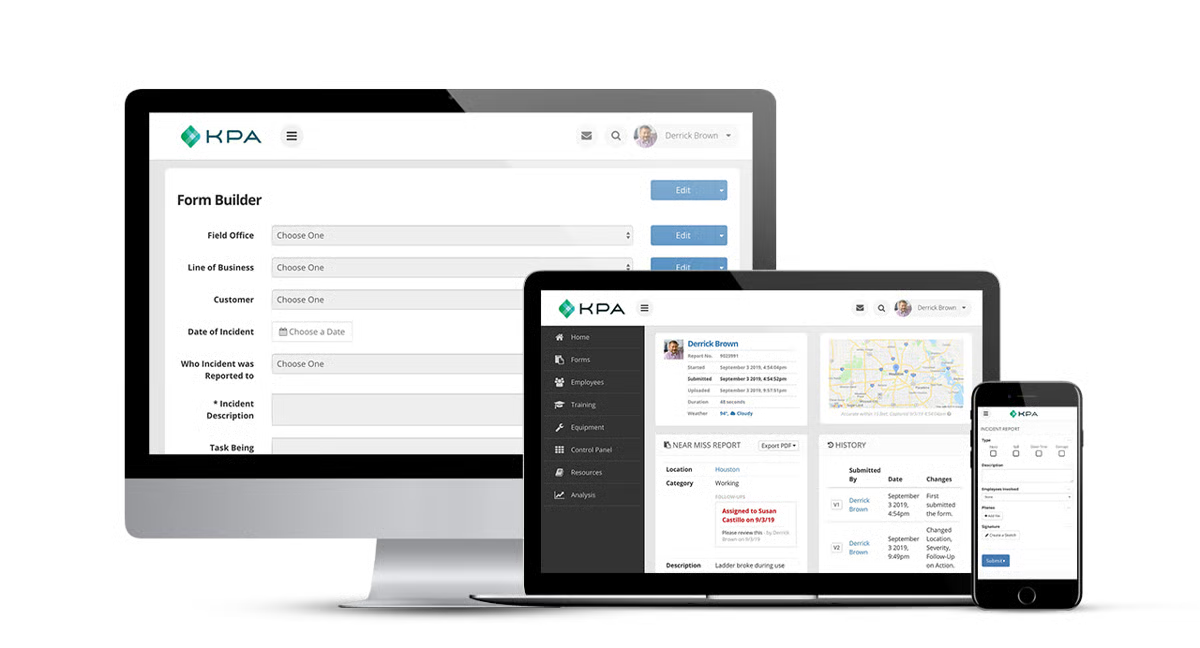
While KPA Flex offers strong functionality, user feedback reveals a few pain points. A recurring issue involves report tagging and organizational visibility. Although filtering by company or project is available, several users note the absence of a centralized profile that consolidates all related forms, trainings, and incidents for a specific entity. Such a unified view would enhance transparency and simplify management, particularly in large or multi-site organizations.
Another commonly cited limitation concerns composed training modules and renewal settings. Once a training is bundled into a composed module with a fixed renewal date, users cannot easily reassign it on an individual basis. This becomes cumbersome when trying to assign ad hoc or one-off training, especially for employees who have already completed it earlier in the cycle. Reviewers suggest that more granular control over training assignments would make the platform significantly more flexible.
Overall, KPA Flex is viewed as a dependable and adaptable solution for managing safety programs and compliance training. While enhancements in reporting visibility and training management would improve the experience further, its strengths in integration, automation, mobile access, and well-reviewed course content make it a compelling choice for organizations focused on operational safety and regulatory adherence.
What I like about KPA Flex:
- I noticed that many users find the API integration especially valuable. It seems to work seamlessly with internal systems, which helps teams save time while adhering to their existing workflows.
- The automated reporting features stood out. The ability to schedule reports, filter data, and pull historical insights makes audit prep and leadership updates much more efficient.
What G2 users like about KPA Flex:
"We use KPA Flex primarily as our training platform. While it offers more capabilities, this is the extent of our use, and we still get a lot of value from it. The training is solid, but the real standout is the API. It allows us to integrate KPA Flex with our existing system, so we can maintain our training schedule and track completions internally while leveraging their platform. It's fantastic.
The KPA community and employees are also excellent, both incredibly helpful and responsive. The initial setup was very smooth. We were up and running in just a couple of days. As a smaller company, we were able to import our data in a single day. The API integration took a bit longer but was still very straightforward."
- KPA Flex Review, Timothy S.
What I dislike about KPA Flex:
- A recurring issue seems to be the lack of a centralized profile view. G2 users say it’s hard to track all related forms, trainings, and incidents for a specific company or project in one place.
- I came across several comments about the limitations in composed training modules; once a training has a set renewal date, it can’t be reassigned individually, which creates friction when assigning one-off sessions.
What G2 users dislike about KPA Flex:
"So far, my only complaint is with composed training. Once you set renewal dates and include the training in a composed program, you can no longer assign it as a one-off. Sometimes we need to reassign a training, even if someone has already completed it earlier in the year, but the system doesn't allow for that flexibility."
- KPA Flex Review, Aaron B.
5. Ideagen EHS: Best for high-risk industries with complex compliance needs
From what I’ve seen in G2 reviews, one of Ideagen EHS’s biggest strengths is its ability to handle incident tracking and safety audits across multiple locations.
According to G2 data, Ideagen EHS is especially popular among enterprise organizations (54%), with a notable presence in the mid-market segment (23%). This demonstrates its effectiveness at scale in industries where multi-site coordination and compliance are critical.
Users frequently highlight how easy it is to log events—whether they occur in manufacturing, logistics, automotive, construction, or office environments—and follow up with corrective actions.
Centralizing all safety activities in one platform gives teams a clear, unified view of what’s happening on the ground, which many say has significantly improved their incident response and management.
A common theme in the feedback is the platform’s flexible setup. I’ve noticed that many reviewers like being able to pick only the modules they need. This keeps the system from feeling cluttered and allows companies to scale it based on their size and changing needs. From what I’ve seen, this flexibility makes the platform more efficient and better suited to different compliance approaches.
Another standout? The automated alerts and reminders. Several users say these notifications help them stay on top of inspections, audits, training deadlines, and other compliance tasks. Instead of manually chasing people, the system reminds the right folks at the right time, helping to reduce compliance gaps and last-minute scrambles.
Despite these strong points, users report a few areas where usability could be enhanced. A common frustration involves navigation: locating specific records or historic incident data can require several clicks, which may hinder productivity during urgent situations. Some reviewers have suggested that streamlining data access and reducing screen depth would significantly improve the user experience.
Another issue relates to workflow consistency and discoverability. Some users find that features are unintuitively placed or “hidden,” making it difficult for teams to access and apply them uniformly. This inconsistency can lead to departments using the same tool in varying ways, complicating collaboration and slowing down resolution timelines on shared safety issues.
Overall, Ideagen EHS is recognized as a scalable solution for organizations committed to maintaining high safety and compliance standards. While there is room to improve the user interface and workflow standardization, the platform’s strengths—particularly in incident tracking, modular customization, and automated compliance support—make it a strong fit for teams operating in complex or multi-site environments.
What I like about Ideagen EHS:
- I noticed that users really value how easy it is to track incidents and manage safety audits across various locations, which seems to streamline corrective actions and improve overall incident management.
- The platform’s modular setup stood out. The ability to choose only the features needed helps keep things efficient and scalable for different organizations.
What G2 users like about Ideagen EHS:
"For tracking and managing Environmental, Health, and Safety (EHS) metrics, Ideagen EHS’s comprehensive dashboard is extremely useful. It provides a clear overview of all activities and incidents, helping you identify trends and areas for improvement. The incident management feature is particularly strong, allowing for quick reporting and fast resolution of issues. The automated reporting tools are also a big help, streamlining compliance tracking and saving a significant amount of time."
- Ideagen EHS Review, Marcin K.
What I dislike about Ideagen EHS:
- From what I’ve read, navigating the system can be tricky at times, especially when trying to access specific incident data quickly during urgent situations.
- Some users mention that workflows feel inconsistent and certain tools are too hidden, which seems to create confusion and affect cross-team collaboration.
What G2 users dislike about Ideagen EHS:
"Ideagen EHS does a great job of organizing data, but its notification system feels a bit limited. There’s not much flexibility in customizing what triggers alerts, which means it doesn’t always deliver the right information at the right time. This has created some challenges in responding to safety events as quickly and effectively as needed. Having more customizable notification options would really improve how we manage safety incidents."
- Ideagen EHS Review, Constantin T.
6. Intelex EHSQ: Best for mid-to-large enterprises needing unified quality and safety management
From what I’ve seen in G2 reviews, Intelex EHSQ stands out for its intuitive, GUI-based module builder. Many users say it’s easy to create or modify workflows and forms using drag-and-drop tools—no deep technical skills needed.
I’ve come across several reviews that highlight how this flexibility allows teams to adapt quickly without relying on developers, which helps them stay agile and efficient. According to G2 data, this ease of use and configurability have made Intelex particularly appealing to larger organizations, with 68% of users coming from the enterprise segment and 24% from mid-market businesses, reflecting its strength in supporting complex EHSQ needs at scale.
One thing reviewers consistently appreciate is the quality of Intelex’s customer support. I’ve seen a lot of positive comments about how knowledgeable and helpful the support team is, especially when users run into issues with configurations or custom setups. That said, there’s a recurring concern about response times. While the help is valued, many users wish support were quicker, especially when they’re working under tight deadlines.
Another key strength, based on user feedback, is how well Intelex integrates with other systems. I’ve seen several reviewers mention how easily it connects with tools like employee databases and customer complaint systems. This kind of integration helps reduce manual work, keeps data consistent, and makes collaboration across teams much smoother, especially in large or distributed organizations.
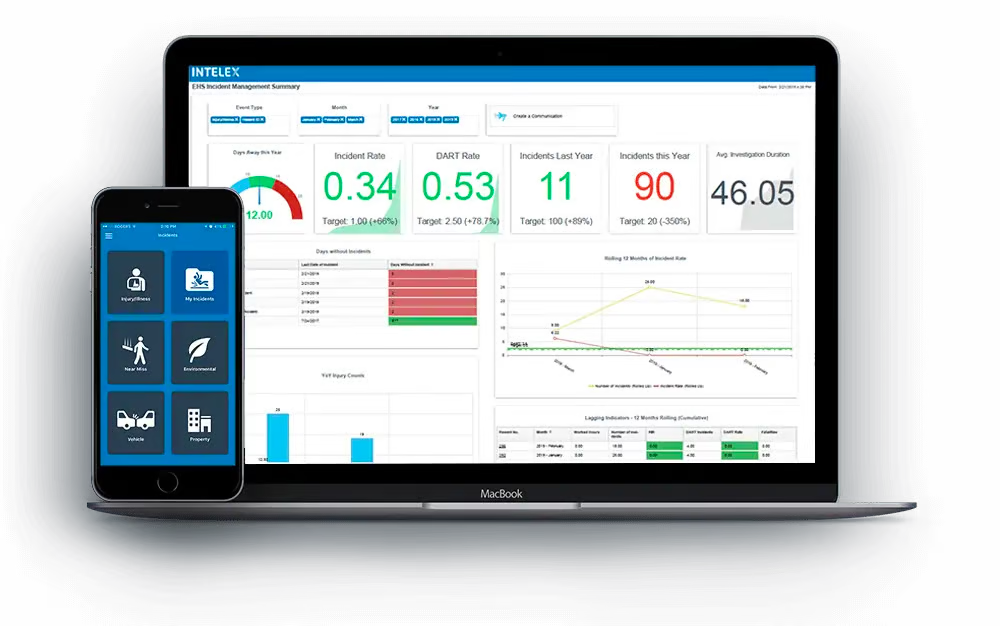
That said, some users point to the mobile experience as an area for improvement. While mobile access is a major advantage in theory, especially for teams conducting fieldwork or inspections, multiple reviewers note that the mobile app lacks feature parity with the desktop version. Certain functions behave differently or are unavailable on mobile, which can hinder productivity for users who rely on on-the-go access.
Another commonly mentioned challenge involves limited backend access for advanced users. While security and system integrity are understandably prioritized, some power users express frustration at not being able to troubleshoot or make custom modifications independently.
Even so, most users continue to view Intelex EHSQ as a dependable and adaptable platform. With enhancements to mobile functionality and backend visibility—particularly for experienced admins—the system could deliver even greater value to organizations seeking proactive, self-sufficient control over their EHSQ processes.
What I like about Intelex EHSQ:
- The drag-and-drop module builder seems to be a major advantage—users find it easy to build or adjust workflows without needing coding expertise, which helps teams stay flexible.
- Integration capabilities are often praised; connecting Intelex with other business systems seems to reduce manual work and keep everything running smoothly.
What G2 users like about Intelex EHSQ:
"Converting to Intelex has yielded significant improvements in efficiency and ease of tracking and accessing data."
- Intelex EHSQ Review, Edward T.
What I dislike about Intelex EHSQ:
- I noticed several reviewers pointing out that the mobile app lacks key features compared to the desktop version, which can be limiting for field teams.
- Advanced users seem frustrated by restricted backend access—they want more control for troubleshooting or customization without always needing support.
What G2 users dislike about Intelex EHSQ:
"The reporting suite needs further development, but external reporting through Power BI or Tableau is possible with the right team."
- Intelex EHSQ Review, Harjas D.
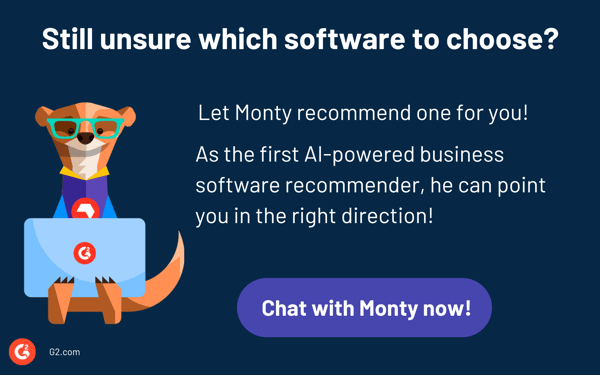
Environmental health and safety software: Frequently asked questions (FAQs)
Got more questions? We have the answers you need!
Q. What are the industry's best EHS systems for improving efficiency?
VelocityEHS Accelerate is one of the most efficient EHS systems available. It integrates EHS, ESG, and sustainability tools into a single platform, helping companies reduce manual work, automate compliance tasks, and improve visibility across operations. It’s widely used by enterprise teams looking to scale environmental and safety management with maximum efficiency.
Q. What is the best environmental health software with mobile access?
SafetyCulture (via its iAuditor app) is the leading choice for mobile EHS. It allows teams to complete inspections, submit reports, and manage checklists directly from mobile devices. It also supports offline access and is especially valuable for field workers and distributed teams who need flexibility and speed.
Q. What’s the best EHS app for compliance tracking?
ETQ Reliance QMS is considered one of the best compliance-focused EHS platforms. It merges quality and safety management, enabling detailed audit tracking, document control, and CAPA workflows. Its structured, risk-based approach makes it a top pick for regulated industries that prioritize accountability and transparency.
Q. What is the best free EHS software?
Most robust EHS platforms are paid, but some offer free trials or limited-feature community editions. Vendors like SafetyCulture (iAuditor), EcoOnline, and Safesite provide starter plans or freemium versions for smaller teams. It’s best to compare options on platforms like G2 or Capterra based on your industry, compliance needs, and team size.
Q. Which EHS management tool is best for mid-sized companies?
KPA Flex is designed with mid-sized organizations in mind. It simplifies EHS management by combining training, incident reporting, and compliance tracking in one user-friendly platform. It’s scalable without being overwhelming, making it ideal for growing safety teams.
Q. What is the best environmental health and safety software for small businesses?
SafetyCulture stands out for small businesses due to its affordability, ease of use, and strong mobile capabilities. With a free tier and low-cost plans, it allows smaller teams to stay compliant, manage inspections, and log incidents without investing in a large-scale system.
Stay ahead of safety standards — without the headache
After digging deep into today’s best environmental health and safety software solutions, I’ve noticed how the right platform can transform compliance from a reactive chore into a proactive strategy. Whether your priority is managing audits, tracking incidents, or keeping up with ever-changing regulations, there’s an EHS tool designed to help.
Here’s the reality: safety risks won’t wait, audits come fast, and compliance deadlines don’t move. Trying to juggle it all with spreadsheets and scattered processes only increases the chances of missed tasks or non-compliance. But with the right EHS software, you can centralize data, automate safety workflows, and stay ahead of regulatory demands without burning out your team.
I hope these insights help you find an EHS solution that fits your organization’s needs. Because when it comes to workplace safety and compliance, confidence and control should always come standard.
Streamline compliance, reduce risk, and stay audit-ready by using G2’s trusted insights to choose the best GRC platform for your industry and needs.
.png?width=400&height=150&name=Untitled%20design%20(56).png)








.png)


